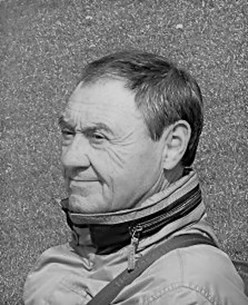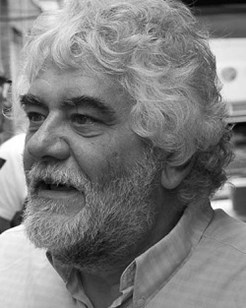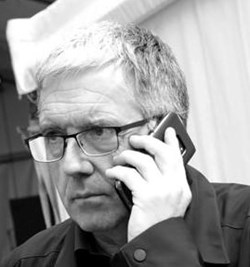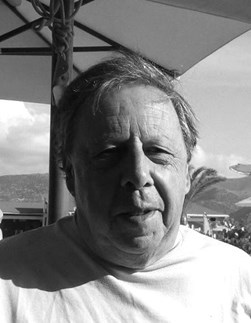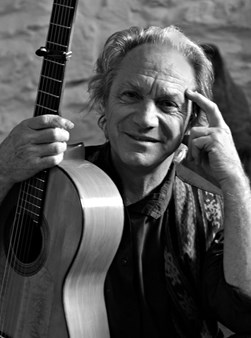Florian Kästner: Gleiswechsel
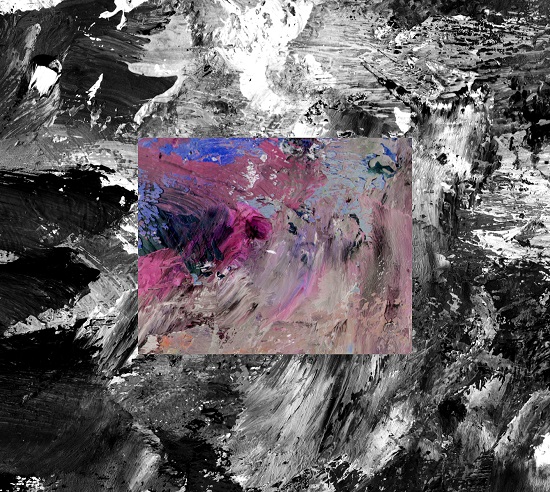
F
MR 874 659
'Gleiswechsel' ist in der Tat das erste und zudem live eingespielte Soloalbum Florian Kästners als Pianist und Komponist. „Ich würde dieses Soloalbum als eine Momentaufnahme meines fast schon obsessiven musikalischen Spieltriebs bezeichnen“, so Florian Kästner selbst, „und als Essenz meiner Idee von Jazz.“ Dabei gehört Kästner sicherlich nicht zu den Pianisten, die ähnlich wie die Berliner Jazzpianistin und Bandleaderin sowie Hochschullehrerin Maria Baptist das rhythmisch-kraftvolle Spiel bevorzugen. Verhalten-lyrisch oder lyrisch-poetisch und sicherlich introvertiert und nicht expressiv kann man das Spiel Kästners bezeichnen.
Dass der in Leipzig geborene Musiker seiner Geburtsstadt das erste Stück der eingespielten CD widmet, mag Zufall sein. Doch lauscht man der Komposition, so gewinnt man nicht den Eindruck einer pfiffigen, hippen und jungen Messestadt, der der Sprung in den Westen gelungen ist. Etwas Wagnerhaftes scheint musikalisch über Leipzig zu schweben, wenn man Kästners Spiel verfolgt. Auch wenn es aus Sicht des Pianisten „keinen besseren Ort für einen musikalischen Menschen um die schönen Künste kennenzulernen“ gibt, so fragt man sich, in welchem Umfeld sich Kästner bewegt. Es fehlt bei 'leipzig' zumindest eine gewisse Spritzigkeit. Vielleicht liegt das auch in Kästners Sozialisation begründet, da er diese so beschreibt: „Ich könnte sogar behaupten, auf eine niemals erzwungene Weise war ich bis zur Pubertät regelrecht abgeschirmt gegen den süßen Saft von Punk und E-Gitarre. Bis heute prägt diese Tatsache meine Herangehensweise an Klang und Entwicklung von musikalischer Form.“
Dass die im väterlichen Plattenschrank entdeckten Scheiben des Bill Evans Trios (mit Scott LaFaro und Paul Motion, ab 1958) eigentlich dazu beigetragen haben, dass Kästner Jazzpianist wurde, kann man sich beim Hören der vorliegenden Scheibe auch nicht so recht vorstellen. Doch wie formuliert Kästner: „Je länger ich diese Musik hörte, umso mehr wollte ich wissen, wie sie lebt. Alle Jazzpianisten nennen diese Formation – und ich begegnete ihr rein zufällig. Jazz hatte mich vorher nie interessiert, ich empfand die klassische Musik mit all ihren Facetten immer als vollständig und ausreichend.“
Neben eigenen Kompositionen mit so „malerischen Titeln wie 'bunte republik' oder 'derrick' finden sich auf der CD auch 'round midnight/ask me now' von Thelonious Monk, ein Titel von George Gershwin und selbst eine Passacaglia von Bach. Hört man 'leipzig', so scheint es, als gehe das Leben in der Großstadt beschaulich dahin und als gäbe es keine Hektik in der Großstadt. Man hört keinen Straßenlärm, auch nicht das Quietschen der Tram, nicht die ein- und ausfahrenden Züge in dem größten deutschen Kopfbahnhof. Nein, man muss beim Zuhören an einen lauschigen Nachmittag im Park denken. Alles fließt, aber ruhig und ohne Gehetztheit.
Kurz schaut man in der 'bunten republik' vorbei, die aber gar nicht in Leipzig, sondern in der Neustadt von Dresden existierte. Auch dieses Stück strahlt etwas von Entschleunigen und wenig von Quirligkeit aus, auch wenn man einige Klavierpassagen so interpretieren könnte.
Nicht gar so kurz wie 'derrick' ist das Stück 'hinterrücks' geraten, das ein abruptes Ende aufweist. Einen sakralen Raum für das Anstimmen von 'gebet' und 'ich rufe zu dir' stellt sich der Zuhörer vor, wenn bei diesen Kompositionen die ersten Tasten des Klaviers angestimmt werden.
Bei ' rufe zu dir' meint man gar, einen verstimmten Glockenschlag zu hören. Wessen Aufmerksamkeit soll er wohl erzeugen?
Bei dem Stück 'punkt' kann man sich angesichts der bruchhaften Läufe kaum das Zeichen für das Satzzeichen vorstellen, sondern eher ein Semikolon, das die Fortsetzung eines im Satz formulierten Gedanken signalisiert.
Im Übrigen sind die Übergänge zwischen den einzelnen Kompositionen kaum merkbar, sodass man fast unversehens in die Welt von Thelonius Monk eintaucht. Allerdings ist m. E. das bekannte Thema 'round midnight' in Kästners Adaptation des Titel nur zu erahnen. Kirchenlied oder nicht fragt man sich spontan, nachdem die ersten Takte von 'luz long' verklungen sind.
Richtig flott – ein wenig überraschend – geht es dann bei der Reise mit der DB zu: 'sänk juh for träweling' heißt es. Wer regelmäßig DB fährt, der kann sich beim Hören ein Schmunzeln nicht verkneifen.
Ähnlich verhalten und ruhig wie die erste Einspielung von 'Gleiswechsel' endet die CD mit dem Gershwin-Titel 'someone to watch over me'. Fazit: Wer musikalisch „medidative Kontemplation“ sucht, der liegt goldrichtig, wenn er Kästners Scheibe auflegt.
© ferdinand dupuis-panther
English press promo text
To present Gleiswechsel as a debut CD does not do the artist or the work justice, even though this is in fact the first solo album by Florian Kästner as a pianist and composer.
The album is rather more like a runner's acclaimed finish to a musical marathon. "I would describe this solo album as a snapshot of my almost obsessive musical instinct to play" said Florian Kästner "and as the essence of my idea of jazz".
Although Kästner's music, compositions and arrangements don't require additional explanation or background information in order to anchor them firmly in the mind and psyche of the listener, providing both exhilarating tension and laid-back stimulation, it's still rewarding to take a look at the artist's musical biography. His path to jazz may be confidently described as an avant-garde Odyssey which also makes a great deal of sense, so to speak.
Contradictions, fractures, willpower, continuous development, powerful progress, focus on the essentials and passionate attempts; these are all attributes that apply to both musical creativity and the artist Florian Kästner.
Kästner was born in Leipzig, and he says there is "no better place for a musical person to get to know the fine arts". Growing up in a highly musical environment (his mother a violinist in the Radio Orchestra, his father the organist of the famous St. Thomas Church), classical music was a part of his everyday life since early childhood.
He puts it in a nutshell by saying: "I would even say that I was literally, though never forcibly, shielded from the sweet sounds of punk and electric guitar until puberty. Even today, this fact characterizes my approach to sound and the development of musical form".
Kästner first learned the violin and showed a remarkable talent even as a child. He played in both small and large orchestras, also as a soloist, and got to know, play and love the repertoire of classical concert halls. Tchaikovsky, Rachmaninoff and Scriabin were his heroes at this time. At that point he was just sixteen-years-old, and still hadn't ever sat on a piano stool.
Around the same time, Florian Kästner discovered a few records by the Bill Evans Trio (with Scott LaFaro and Paul Motion, from 1958) on his father's shelves, and was 'infected'. "The longer I listened to this music, the more I wanted to know how it existed. Every jazz pianist mentions this line-up, and I encountered it purely by chance. Jazz had never interested me before, and I always felt that classical music in all its facets was complete and sufficient".
And then?
While Kästner officially embarked on a career as a concert violinist, he was magically attracted to the piano: "At night, I secretly practiced piano and listened to jazz to the point of exhaustion. At some point I had to make a decision. By then I was a really good classical violinist, but I still had to be a pianist. The enormous longing for it was unbearable. Everyone advised me not to do it... But I did it".
Fortunately, in his early twenties, Florian Kästner met Richie Beirach who encouraged him from the beginning and became his teacher and mentor. He then plunged headlong into ten years of what he today calls "passionate hard labour".
Now with Gleiswechsel, Florian Kästner presents an exhilarating solo album as a pianist and composer. It is both proof of his ability and an impressive statement on jazz and his understanding of it. And Kästner has a lot to say about it in terms of composition and interpretation, as well as what is on his mind and from which sources he draws internally.
"I was always bothered when you could perceive a strong break between theme and improvisation in jazz pieces. My intention is to make music in which the piece 'composes itself further'. Ideally, shape and development blend for the listener imperceptibly. That's to say, they experience only a smooth transition, if any at all, between composition (form) and improvisation (development). The piano as a solo instrument allows me to fully determine form and its arrangement itself in the moment. In doing so, improvisation over pre-composed forms becomes one thing, improvisation as immediate-composition another.
The music plays through me. It begins at the point where I stop controlling and expecting. The most difficult aspect is winning this freedom; not to think, not to expect, but to admit full confidence in my ability and musicality, and to accept the possibility of failure.
Over the years of trial and failure, I now see myself as equal to the challenge".
That is Gleiswechsel. The pieces on the album sound like ambiguous biographical notes on 'Gleiswechsel' and 'Sänk Juh For Träwelling'; bow down before a city that has so characterized the artist on 'Leipzig', and show no reticence towards Florian Kästner's classical background on his adaptation of the age-old choral 'Ich rufe zu Dir' (I call to you).
Gleiswechsel almost 'reads' like the genetic footprint of an artist who has classical music and jazz rooted equally in his genes, and as one of the best ideas of jazz one could ever have!
Informationen
www.monsrecords.de









